How To Fix A Hydrolocked Diesel Engine
Last Updated on September 7, 2021
In a perfect world, every engine would run equally intended for an indefinite period of fourth dimension, free of significant bug. Unfortunately, mechanical devices of any type are decumbent to failure in time, with the internal combustion engine beingness no exception. Though unpleasant to think about, a vehicle's engine can fail in several specific means, leading to damage of varying degrees.
Of these weather, few are as dreaded as hydrolock. Though generally rare, hydrolock tin can wreak havoc on an engine's internal components, even damaging an engine beyond repair in the almost astringent cases. Luckily, most drivers volition never meet a true instance of hydrolock. Still, those that practise will not soon forget it.
Demand assistance with a automobile problem Right Now?
to chat online with a verified mechanic who volition answer your questions.
In any outcome, it certainly pays to understand the characteristics of hydrolock, too as the root cause of this condition. Such cognition has the potential to spare your engine from cataclysmic failure, preventing a series of hardships along the way.
Read on to larn more than about hydrolock, as well as what to practice, should yous run into this situation yourself.
What is a Hydrolocked Engine?
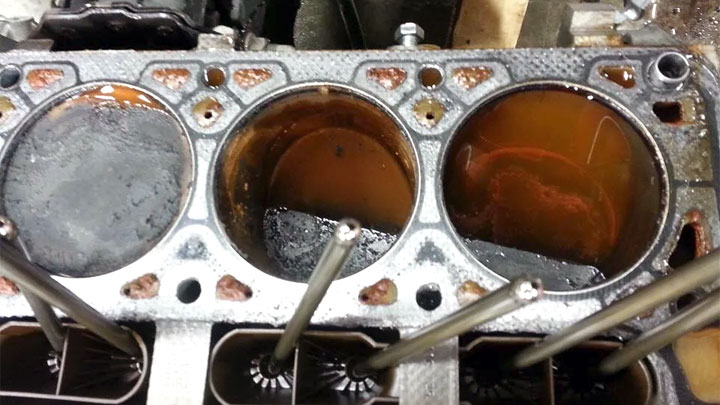
The term "hydrolocked", describes an engine that's internal movement is halted, due to the presence of fluid on superlative of ane or more pistons.
Since fluid, in general, is largely incompressible, the piston found within the affected cylinder is prevented from reaching the summit of its stroke. This effectively "locks" an engine's rotating assembly in place, thereby preventing whatever further movement.
The most common culprit backside hydrolock is the inadvertent introduction of h2o into an engine's cylinders. However, the escape of coolant into a cylinder, as the event of another mechanical issue, tin can too pose a run a risk of inducing a hydrolock condition.
Hydrolock can occur in engines that are both running and at rest, depending upon the exact state of affairs at hand. In running engines, sudden hydrolock will lead to stalling, often at the expense of various internal components.
On the other hand, attempting to kickoff a hydrolocked engine, that has previously gone unused, is mostly a futile effort.
What Kind of Damage is Washed When Hydrolocking?
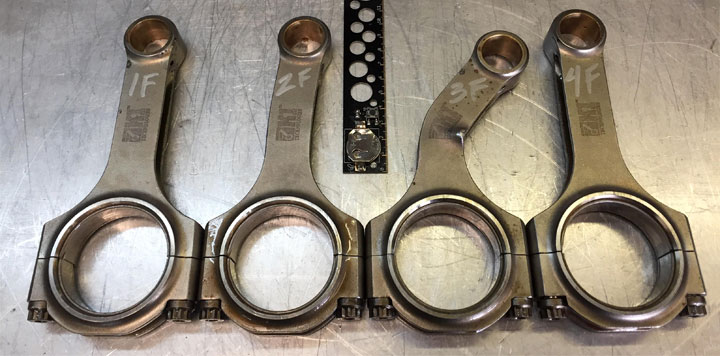
When an engine hydrolocks, it is not uncommon for any number of internal components to get damaged. However, on rare occasions, an engine tin can likewise hydrolock without any discernible damage.
By general rule, the amount of damage incurred from hydrolock is directly proportional to the speed of an engine when hydrolocking takes place. The faster an engine'south speed, the more than devastating the results of hydrolock typically are.
Whatever impairment observed when an engine hydrolocks, comes as the result of the sudden stoppage of mechanical components that had been operating at speed only moments before.
The momentum of an engine'southward rotating associates is often absorbed past the weakest associated component, as all comes to an abrupt stop. This is ofttimes plenty to deform or destroy the individual component(due south) in question.
The post-obit are several of the most common kinds of harm observed during hydrolock.
- Aptitude or broken connecting rods
- Ejected piston/connecting rod
- Croaky cylinder head
- Cracked cylinder wall
- Damaged crankshaft
- Compromised bearings
Symptoms of a Hydrolocked Engine
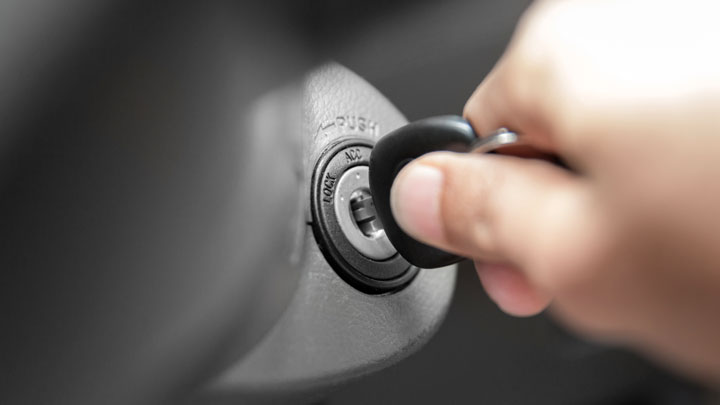
The symptoms associated with hydrolock vary, based upon the verbal operating conditions of an engine when such circumstances ascend. However, a number of these symptoms are far more prevalent than others.
The following are several of the most common symptoms associated with engine hydrolocking.
- Sudden engine stalling
- Abnormal sputtering
- Sudden "thump" dissonance when attempting to get-go engine
- Failure of engine to turn over
- Onset of knocking or hammering racket
Causes of a Hydrolocked Engine
#1 – Water
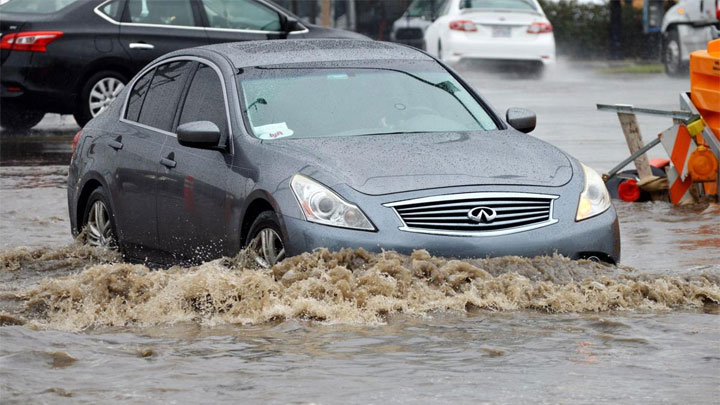
The nigh mutual crusade of hydrolock is the intrusion of water from an outside source, into one or more of an engine'southward cylinders. This state of affairs often presents itself when a vehicle is exposed to flood waters of one degree or some other.
When this occurs, water is immune to enter through an engine's intake manifold, before pooling within i or more than individual cylinders.
Some reports indicate that such bug are slightly more than prominent in vehicles equipped with a cold air intake. This stems from the fact that cold air intakes characteristic an "open" air inlet, rather than an enclosed filter housing. Therefore, the introduction of even moderate amounts of h2o into the area surrounding a cold air intake has the potential to crusade hydrolock.
Water intrusion of this type can occur in both running and non-running engines, though resulting harm tends to be far more severe when hydrolock occurs at full engine speed. In the consequence that an engine does hydrolock when in operation, no farther attempts at starting should be made until all water has been manually expelled.
#2 – Coolant
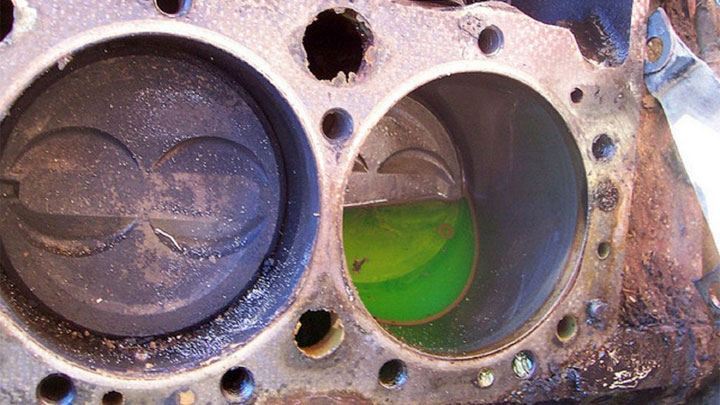
Another mutual cause of hydrolock is the introduction of coolant into an engine's cylinders, due to some other course of mechanical failure. Issues of this nature are most prevalently associated with caput gasket failure.
A failed caput gasket oftentimes allows coolant from an engine's water jackets to seep into one or more of an engine's cylinders. Failure of this type presents the most significant take a chance when a moderate amount of coolant collects inside a cylinder of a not-running engine.
Bold that the affected cylinder does not fill to capacity, upwardly movement of the cylinder'south piston/connecting rod volition still be possible until the intruding coolant reaches the bottom of the cylinder's head. In many instances, plenty momentum is gained prior to hydrolock, to cause meaning internal engine damage.
Can a Hydrolocked Motor Be Fixed?
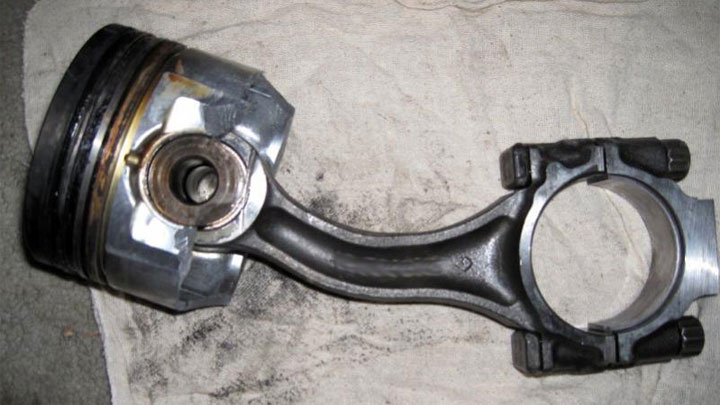
Whether or not a hydrolocked engine tin be stock-still, is largely dependent upon a number of factors. These include the operational country of an engine when hydrolocking occurred, the number of cylinders that are afflicted, and the severity of impairment incurred during hydrolock.
In the case of severely damaged engines, such as those that have ejected a piston/connecting rod through the oil pan or block, the repair is highly unlikely. This is also often the case when a piston or connecting rod has distorted severely enough to crusade pregnant impairment to its corresponding cylinder wall.
On the other mitt, engines that have simply "locked" due to the incompressibility of water, without incurring internal damage, can typically be restored to service. This is well-nigh often done by removing all spark plugs, before cranking an engine over. Water is purged through these spark plug holes, thereby remedying the hydrolock itself.
Additionally, i must as well decide the source of the fluid intrusion, to prevent future episodes of hydrolock. This is adequately self explanatory in the case of a overflowing damaged vehicle. However, further diagnosis is required when the intrusion of coolant has led to a hydrolock condition.
In such cases, whatsoever mechanical consequence leading to coolant intrusion should be remedied prior to returning a vehicle to service. This nigh frequently involves the replacement of an engine's head gaskets. Nonetheless, pressure testing should also be conducted to rule out the presence of a cracked engine block or cylinder caput.
How To Fix A Hydrolocked Diesel Engine,
Source: https://cartreatments.com/hydrolocked-engine/
Posted by: crofootithoust.blogspot.com


0 Response to "How To Fix A Hydrolocked Diesel Engine"
Post a Comment